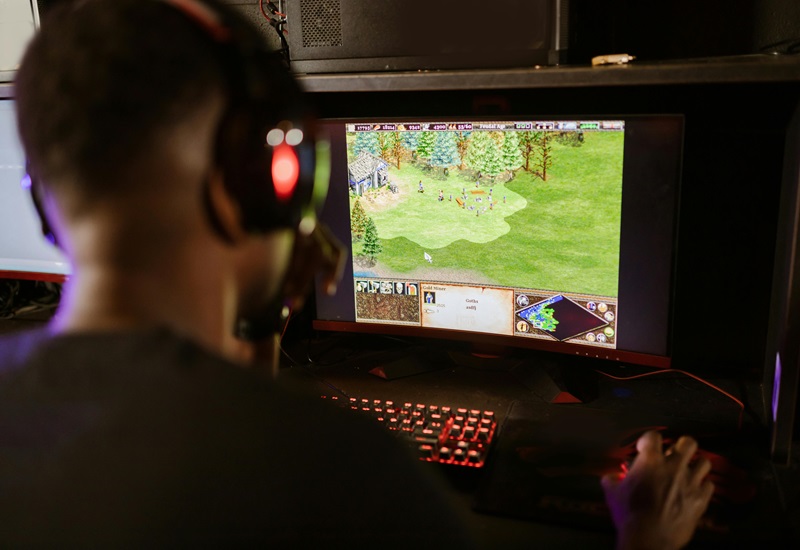Building a Gaming PC for VR: What You Need to Know

Creating a gaming PC for virtual reality (VR) is an exciting process that can transport you to dazzling digital worlds. However, VR demands more from your hardware compared to traditional gaming. This guide will help you understand the essential components and considerations for building a VR-ready gaming PC, ensuring a smooth and immersive VR experience.
Understanding VR Requirements:
Before diving into the components, it’s crucial to understand VR requirements. VR headsets have higher resolution displays and require higher frame rates than standard monitors. This means your PC needs to be powerful enough to handle these demands without causing motion sickness or other issues.
Key VR Requirements
High Frame Rates:
Aiming for 90 FPS or higher to avoid motion sickness.
Low Latency:
Ensuring minimal delay between your movements and the VR world.
High Resolution:
Supporting the higher resolution of VR headsets.
Choosing the Right CPU:
The CPU, or central processing unit, is the brain of your PC. For VR, you need a powerful CPU to handle the complex calculations and processing required for immersive experiences. Intel and AMD both offer excellent options for VR gaming.
Recommended CPUs for VR:
Intel Core i5/i7:
The i5-10600K and i7-10700K are great choices for their performance and price.
AMD Ryzen 5/7:
The Ryzen 5 3600X and Ryzen 7 3700X offer excellent multi-threaded performance.
Selecting a Powerful GPU:
The GPU, or graphics processing unit, is arguably the most critical component for a VR gaming PC. It renders the virtual world and ensures smooth, high-quality visuals. NVIDIA and AMD both offer GPUs suitable for VR, but your choice will depend on your budget and performance needs.
Top GPUs for VR:
NVIDIA RTX Series:
The RTX 3070 and RTX 3080 are excellent for high-end VR experiences.
AMD Radeon RX Series:
The RX 6800 XT and RX 6900 XT provide competitive performance.
Ensuring Sufficient RAM:
RAM, or random access memory, is essential for multitasking and smooth performance. For VR gaming, having enough RAM ensures your system can handle the demands of modern VR applications.
Recommended RAM for VR:
Minimum 16GB:
For most VR applications, 16GB of DDR4 RAM is sufficient.
Optimal 32GB:
For future-proofing and more demanding applications, 32GB is ideal.
Choosing the Right Motherboard:
The motherboard is the backbone of your PC, connecting all the components. When building a VR-ready PC, choose a motherboard that supports your CPU and has the necessary features for a smooth VR experience.
Motherboard Features:
Socket Compatibility:
Ensure the motherboard is compatible with your chosen CPU.
Expansion Slots:
Look for multiple PCIe slots for future upgrades.
VRM Quality:
A good voltage regulator module (VRM) ensures stable power delivery to your CPU.
Opting for Fast Storage:
Fast storage improves load times and overall system responsiveness, which is crucial for VR. A combination of SSD and HDD provides a balance of speed and storage capacity.
Recommended Storage Options:
NVMe SSD:
Use an NVMe SSD for your operating system and VR applications. The Samsung 970 EVO Plus is a great choice.
HDD:
A 1TB HDD can be used for additional storage, such as media files and less-demanding games.
Ensuring Adequate Power Supply:
A reliable power supply unit (PSU) is essential to power your components and ensure stable performance. For a VR-ready PC, choose a PSU with sufficient wattage and high efficiency.
Power Supply Tips:
Wattage:
Calculate your system’s power requirements and choose a PSU with some headroom. A 650W PSU is a good starting point.
Efficiency Rating:
Look for an 80 Plus Bronze certification or higher for efficiency and reliability.
Choosing the Right Case:
The case houses all your components and affects airflow and cooling. For a VR gaming PC, ensure the case provides good ventilation and has enough space for your components.
Case Selection Tips:
Airflow:
Choose a case with good ventilation to keep your components cool.
Size and Compatibility:
Ensure your chosen GPU and other components fit inside the case.
Implementing Proper Cooling:
Proper cooling is vital to prevent overheating and ensure stable performance, especially during intense VR sessions. Both air and liquid cooling options are available, depending on your budget and preferences.
Cooling Solutions:
Air Cooling:
High-quality air coolers like the Noctua NH-D15 provide excellent cooling performance.
Liquid Cooling:
AIO liquid coolers, such as the Corsair H100i, offer efficient cooling and a clean look.
Selecting VR-Ready Peripherals:
In addition to the core components, you need peripherals that are compatible with VR headsets. These peripherals enhance your overall VR experience and ensure smooth operation.
Essential Peripherals:
VR Headset:
Popular options include the Oculus Rift S, HTC Vive Cosmos, and Valve Index.
Controllers:
Ensure your VR headset comes with controllers or purchase them separately.
Tracking Sensors:
Some headsets require external sensors for accurate tracking.
Setting Up Your VR Space:
Having a dedicated space for VR is important to avoid accidents and ensure an immersive experience. Clear an area large enough to move around freely and set up your tracking sensors or cameras.
VR Space Tips:
Clear Area:
Remove obstacles and ensure there is enough space to move.
Cable Management:
Use cable management solutions to avoid tripping over wires.
Lighting:
Ensure the room is well-lit for optimal sensor tracking.
Installing and Configuring Software:
Once your hardware is set up, installing and configuring the necessary software is crucial for a smooth VR experience. This includes drivers, VR software, and game settings.
Software Setup:
GPU Drivers:
Ensure your GPU drivers are up-to-date for optimal performance.
VR Software:
Install the VR platform software, such as SteamVR or Oculus software.
Game Settings:
Adjust game settings for the best performance and visual quality.
Conclusion:
Constructing a gaming PC for VR needs careful planning and attention to detail. By selecting the right parts and ensuring compatibility, you can create a powerful system that delivers an immersive VR experience. From choosing a powerful GPU to setting up your VR space, each step is crucial for achieving smooth and enjoyable VR gameplay. With the right approach, you’ll be ready to explore virtual worlds like never before. Happy building!





